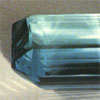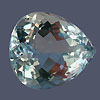- sale
- new items
- lovely beads
- wedding beads
- beads for teens
- for custom order
- newsletter
- recognition
- testimonials
- birthstones
- zodiac signs
- jewelry guide
SHOP BAG
![]() in your bag 0 items
in your bag 0 items
Aquamarine is a gemstone-quality transparent variety of beryl, having a delicate blue, greenish blue to blue green color, typically light in tone, suggestive of the tint of seawater. The name "aquamarine" comes from Latin AQUA MARINA - "water of the sea". It occurs at most localities which yield ordinary beryl, some of the finest coming from Russia. The gem-gravel placer deposits of Sri Lanka contain aquamarine. In the United States, aquamarines can be found in central Colorado. Brazil, Zambia, Madagascar, Malawi, Tanzania, Namibia, Zimbabwe, and Kenya also produce aquamarine, other sources of aquamarine are in Burma, China, India, Australia.
The ancient Romans believed that the aquamarine was sacred to Neptune, the god of the sea, having fallen from the jewel boxes of sirens and washed onto shore. Early sailors wore aquamarine talismans, engraved with the likeness of Neptune, as protection against dangers at sea. They believed that it would ensure a safe passage, and guarantee a safe return, and they often slept with the stones under their pillow to ensure sound sleep. They believed the siren's (mermaid) fish-like lower body was made of aquamarine.
The association with water led to the belief that the aquamarine was particularly powerful when immersed. Water in which this gemstone had been submerged was used in ancient times to heal a variety of illnesses of the heart, liver, stomach, mouth and throat.
People in the Middle Ages thought that aquamarine could magically overcome the effects of poison. A gift of aquamarine symbolizes both safety and security, especially within long standing relationships. Some people even say that the aquamarine reawakens love in a tired marriage.
Aquamarine facts
1. Aquamarine is the official state gem of Colorado.
2. The biggest aquamarine ever mined was found at the city of Marambaia, Minas Gerais, Brazil, in 1910. It weighed over 110 kg, and its dimensions were 48.5 cm long and 42 cm in diameter.



